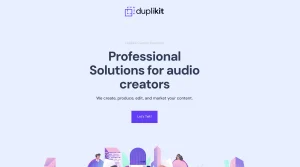Low-Code and No-Code Platforms for Non-Technical Entrepreneurs: Build Without Breaking a Sweat

Let’s be honest—not everyone wants to (or can) write lines of code to launch their dream business. That’s where low-code and no-code platforms come in. These tools are like training wheels for building apps, websites, and automations—without needing a computer science degree. Here’s the deal: if you can drag, drop, and click, you can create something functional. Maybe even impressive.
What Are Low-Code and No-Code Platforms?
Imagine assembling furniture with pre-cut pieces and an Allen wrench versus carving the wood yourself. Low-code and no-code platforms are the IKEA of software development—designed for speed and simplicity.
Low-code platforms require minimal coding (think: tweaking formulas in Excel). No-code? Zero. Just visual interfaces. Both let non-technical entrepreneurs build:
- Websites (Squarespace, Wix)
- Mobile apps (Adalo, Glide)
- Workflow automations (Zapier, Make)
- Internal tools (Airtable, Softr)
Why Non-Tech Founders Should Care
Time is money, and hiring developers? Expensive. A basic app can cost $50K+ if outsourced. With no-code tools, you could prototype it in a weekend for $20/month. That’s not just savings—it’s agility. Test ideas fast. Pivot without guilt.
And sure, these platforms have limits. You won’t build the next TikTok with them. But for MVPs, internal tools, or niche solutions? Game-changers.
Real-World Use Cases
A bakery owner automates custom cake orders using Typeform + Airtable. A fitness coach builds a member portal with Memberstack and Webflow. The possibilities? Honestly, endless.
Top Low-Code/No-Code Picks for Entrepreneurs
| Category | Tool | Best For |
| Websites | Webflow | Design-heavy sites |
| Apps | Bubble | Complex web apps |
| Automation | Zapier | Connecting apps |
| Databases | Airtable | Spreadsheets on steroids |
Pro tip: Start with one tool. Master it. Then expand your toolkit.
The Hidden Perks (Beyond Saving Money)
It’s not just about cost. Low-code/no-code platforms:
- Democratize innovation: Solo founders compete with teams.
- Reduce dependency: No more waiting for devs to fix a button.
- Teach you tech logic: You’ll understand how software “thinks.”
The Catch? Scalability.
These tools are like bicycles—great for short trips, but not cross-country tours. If your user base explodes, you might hit performance walls. That said, many startups scale into custom code later.
How to Get Started (Without Overwhelm)
- Pick a problem: Automate invoicing? Build a client portal?
- Choose one tool: Start small (e.g., Carrd for landing pages).
- Lean on templates: Most platforms offer pre-built designs.
- Iterate: Your first version will be clunky—that’s fine.
And hey, YouTube tutorials are your best friend. No shame in copying.
Final Thought: Empowerment Over Perfection
The goal isn’t to replace developers—it’s to bridge the gap between idea and execution. In a world where speed trumps polish, low-code and no-code tools hand you the keys. What will you build first?








